My favorite thing about medicinal herbs is that many of them double for beautiful cut flower arrangements. In this post, we’re talking all about how to plan your medicinal herb garden to grow enough herbs to provide everything your family will need for a year.

I love thinking of gardens in terms of a year’s worth of whatever it is we’re growing. This is why I help people learn how to grow a year’s worth of food in my books The Family Garden Plan and The Family Garden Planner. I also share some of my tips on planning to grow a year’s worth of food in the following posts:
- Plan Your Best Garden & Harvest for a Year’s Worth of Food
- How Much to Plant Per Person for a Year’s Worth of Food
- How Much Time Per Week to Raise a Year’s Worth of Food
- Home Food Preservation – Preserving Plan for a Year’s Worth of Food
- Planning Your Livestock for a Year’s Worth of Meat Per Person
As you can see, it’s only natural that this post would also reflect how to plan a medicinal herb garden to last your family an entire year so you can use herbs in every season.
Because I love this topic so much, I’ve discussed it many times. In this post, you’ll see two podcasts and multiple videos. Enjoy the newest podcast on planning your medicinal herb garden for a year (whether you’re growing your own or purchasing herbs in bulk). As well as the video episode of the podcast.
The second podcast is a live coaching call with Maddie, a member of the Pioneering Today Academy. We discuss how to plan which herbs to grow, how to expand her herb garden and the properties of different herbs that match her needs.
There are also multiple videos in the post where I share our own medicinal herb garden and how we’ve expanded them.
To grab the Medicinal Herb Garden eBook I mentioned in the podcast, for just a limited time, save over 35% go here
This post also includes multiple videos of the Norris Farmstead. This is the 107-year-old farmhouse that we purchased and renovated as a short-term rental. I’m listing off some of the original herbs that were in the herb garden, what herbs I’ve added and their uses, as well as the growth that a single summer can produce.
If you’re looking to purchase medicinal herb seeds to grow your own garden, be sure to check out these companies:
- Siskiyou Seeds
- Strictly Medicinal Seeds (this is a great starter set from Farmhouse Teas!)
- Seeds for Generations (search “medicinal seeds” on their website)
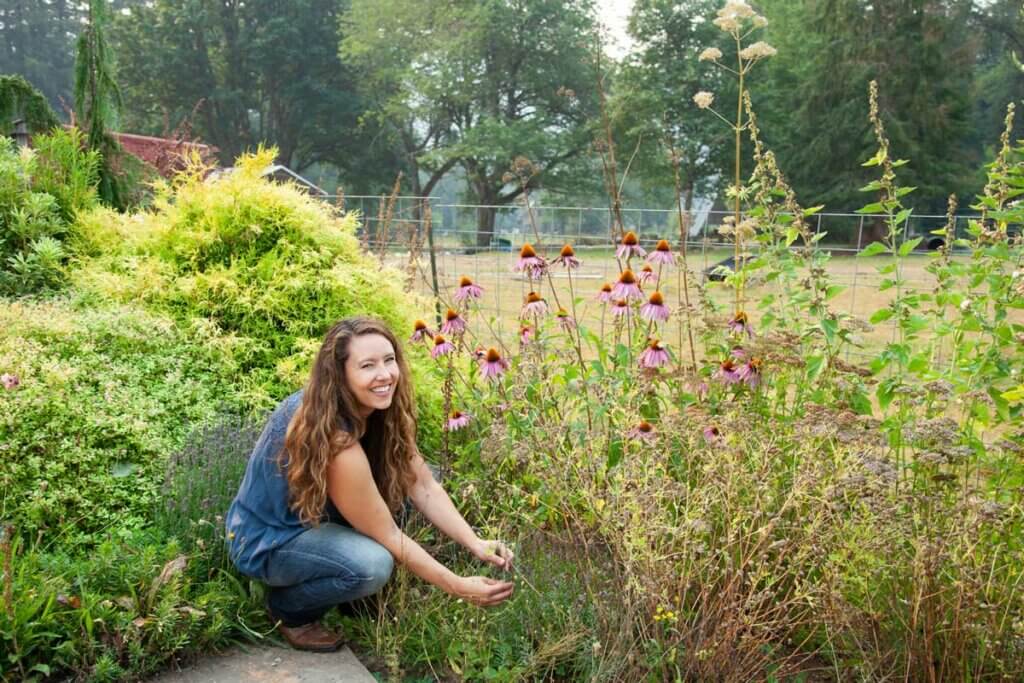
If you’d like access to the academy to learn to grow your own herbs and safely create a natural medicine cabinet from custom blended teas, tinctures, herbal salves and soaps, be sure to sign up for the Pioneering Today Academy. We only open enrollment twice a year. If enrollment is closed, you can sign up for the waitlist so you’re notified first when the doors open again.
For more information, you can check out this podcast interview I did with Carolyn from Homesteading Family where we talk about how to plan and design an old-fashioned cottage garden (aka, medicinal and culinary herb garden).
If you know me at all, you know I’m a huge advocate of using natural remedies to improve my health and boost my immune system. (I also love to boost my immune system naturally with the foods I eat.) Whether it’s making homemade elderberry syrup (or these 29 elderberry recipes) or learning more about using medicinal herbs at home, I’m always studying!
It’s important to note that I am not a certified medical practitioner. This post is not intended to diagnose or treat but is for informational purposes only. Please contact your medical care professional before introducing new herbal remedies into your wellness routine.
Table of Contents[Hide][Show]
Why I Love Growing Herbs
Over the past couple of years, I’ve noticed a definite supply chain issue that includes pharmaceuticals. There are so many people relying on daily medications, what would they do if they could no longer get the medication they need? (Source)
This question has pushed me into diving deeper into my study of herbal medicine. I even wrote an entire post on alternative medicine and what to do if your medicine isn’t available.
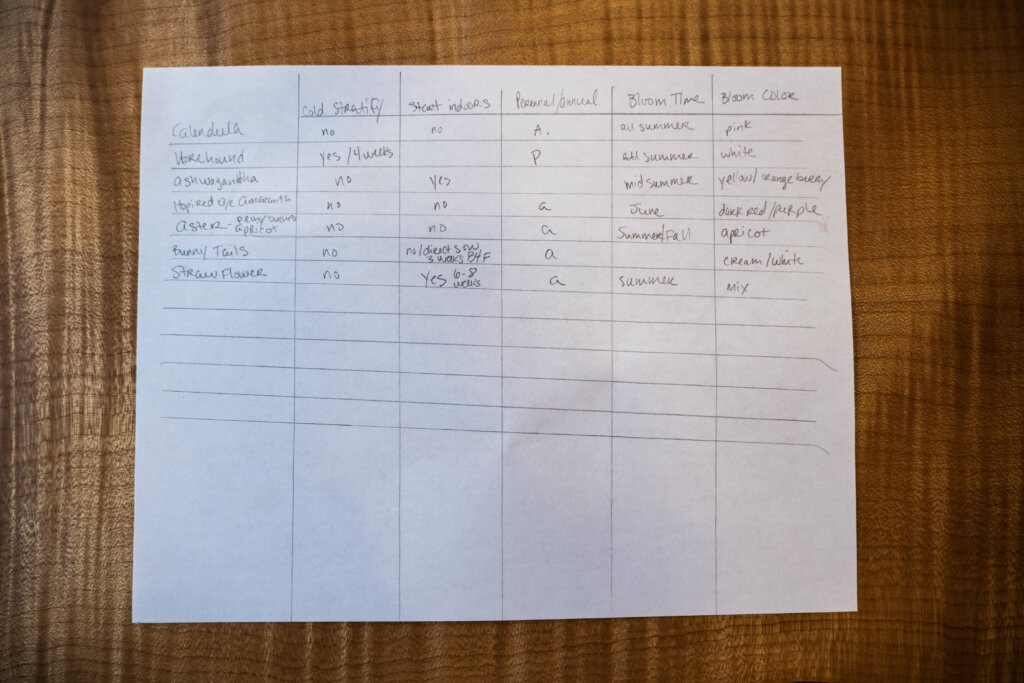
Free Herb Garden Chart
I have a free herb garden chart that I put together for my own herb garden. It helps me know which herbs need cold stratification and which do not. Also which need to be started indoors and then transplanted vs. direct sown.
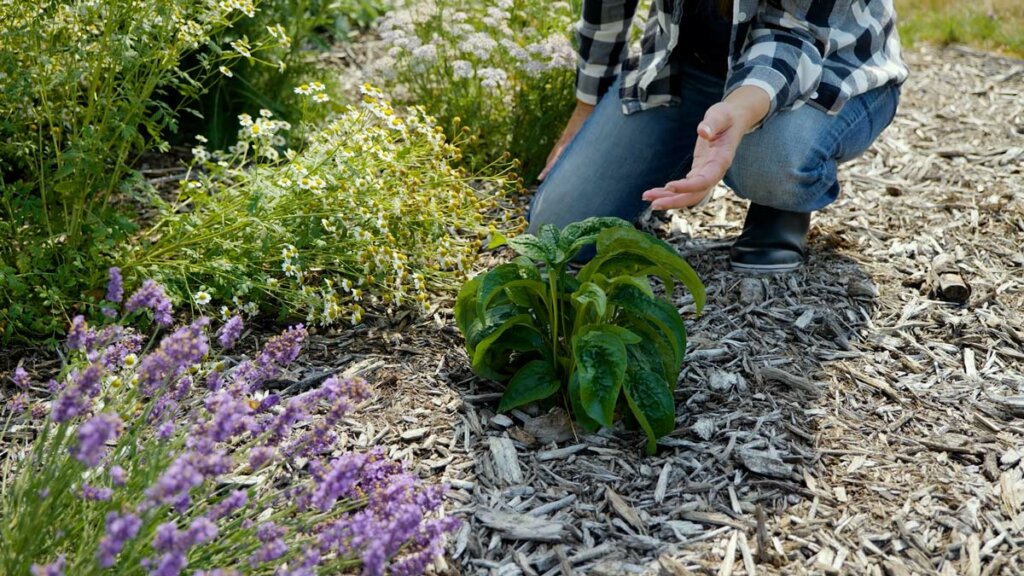
Subscribe to Melissa K. Norris!
Get updates on the latest posts and more from Melissa K. Norris straight to your inbox.
We use your personal data for interest-based advertising, as outlined in our Privacy Notice.
Things to Consider for Your Medicinal Herb Garden
When it comes to our medicinal herbs and flowers, many of them are perennial. This means they come back bigger and better each year, especially if you know how to properly prune herbs & perennials.
Some aren’t technically perennial, but because they’re so prolific (such as chamomile or calendula) they will reseed themselves every year and come back on their own.
Before you know what to plant in a medicinal herb garden, you need to ask yourself which herbs you’ll actually use.
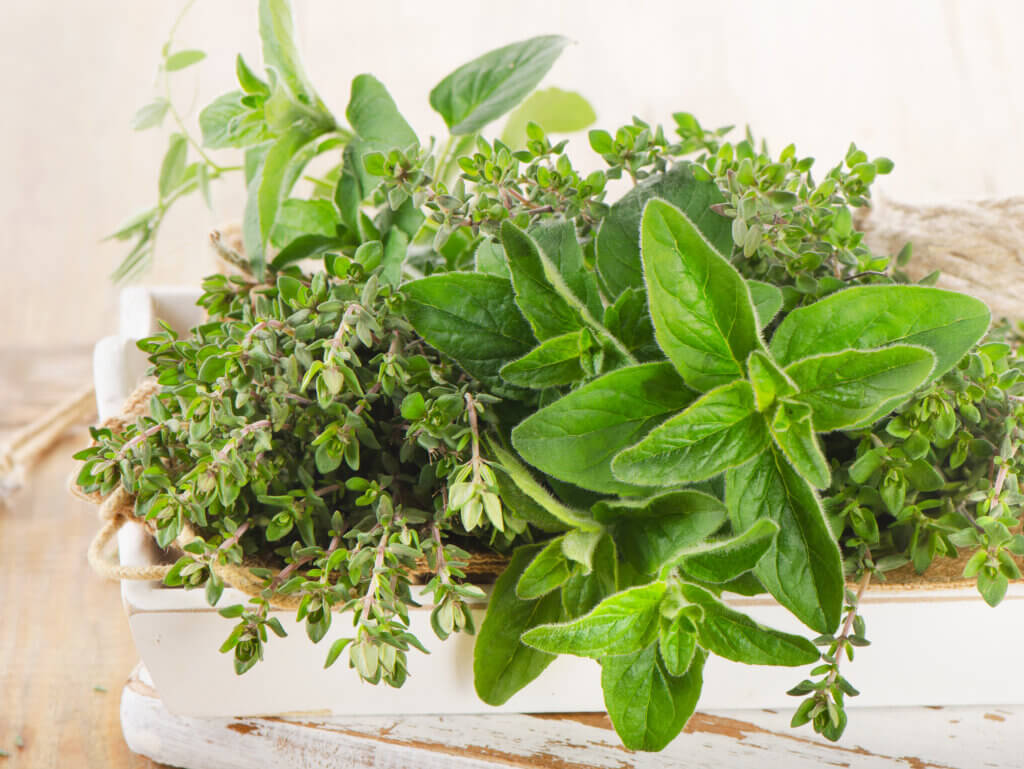
What Herbs Will You Use?
Think about the things you need on a consistent basis. For us, it’s remedies for the cold and flu, stuffy and congested noses, sore throats, earaches, and headaches.
These are the basic common cold/flu symptoms that everyone usually deals with at least once a year.
But if someone in your family has high blood pressure, and you’re not wanting to go the pharmaceutical route, then researching the herbs that can help lower blood pressure and seeing if those plants will grow well where you live is a great first step.
Maddie was interested in bleeding and wound care (for her little kiddos), to which I recommended growing yarrow. It has styptic properties, which means it will stop bleeding, but it also has antiviral properties and it also helps reduce a fever. (Source)
Each medicinal herb garden should look just a little bit different based on the individual needs of your family. That’s the beauty of these gardens, no two are alike!
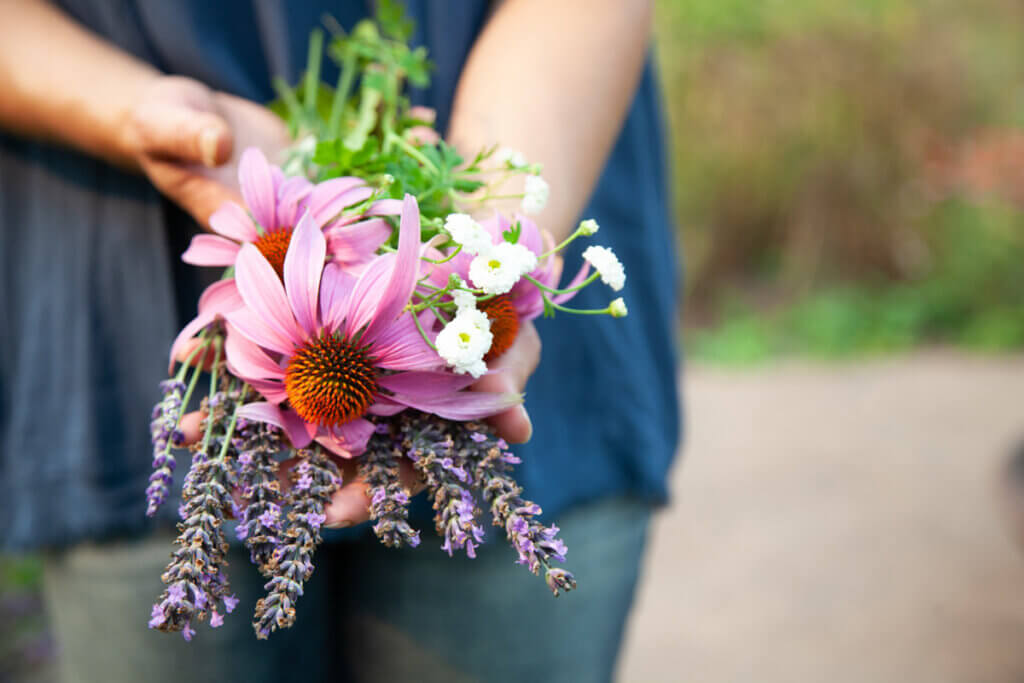
Aesthetic Appeal
Sure, this is a medicinal herb garden I’m growing, but one of the joys of growing medicinal herbs is that it can bring beauty to your yard all summer long when planned correctly!
Now that we have the Norris Farmstead and renting it out as a wedding venue, I also wanted to have the option for the bride to choose some cut flowers for her bouquet or the tables. So choosing medicinal herbs that also have beautiful flowers was important to me.
When planning my herb garden I like to have something in bloom from early spring all the way through fall. I also like to look at how much color I’m planting. I can easily tend to lean more toward the salmon pink color, so I have to force myself to take a closer look and be sure there’s a good variety.
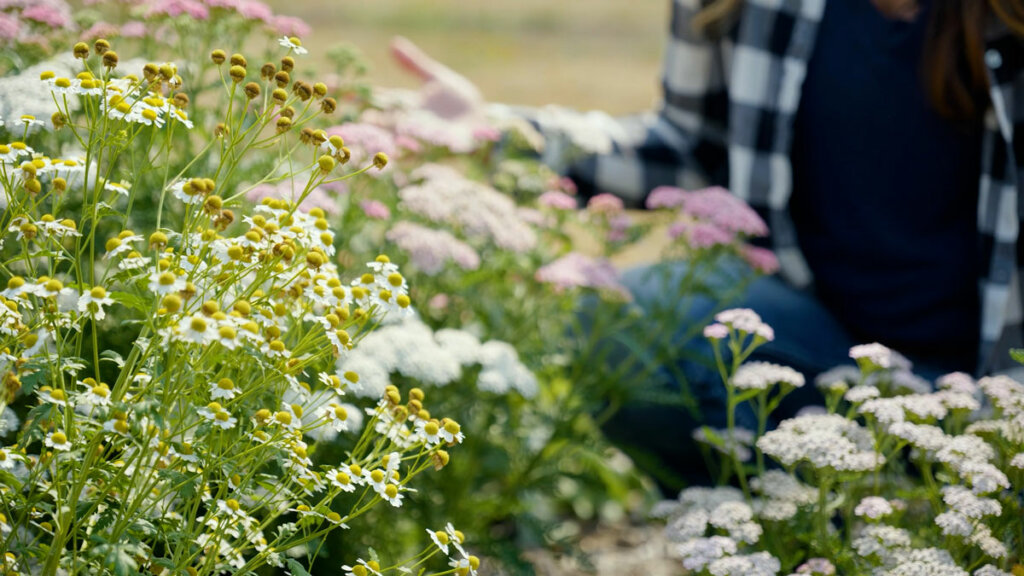
Medicinal Herbs to Grow
The following are just a few of the herbs I grow in my garden. To see the full list, download my free herb garden chart below!
Remember, you don’t have to start growing each of these herbs right now! Feel free to buy these herbs, but remember to purchase them from trusted sources. This is why my go-to for medicinal herbs is Farmhouse Teas and Homegrown Herbalist. And when I’m looking for already-made remedies, I look to Homegrown Herbalist and Azure Standard. (If you’re new to Azure Standard, you can use code “Melissa10” for 10% off your first order of $50 or more!)
- Sage – This is great for sore throats as well as culinary herbs. (Source)
- Bergamot – This is a newer medicinal herb to me, but it grows incredibly beautiful flowers. Because I knew it also had medicinal benefits, I figured it would make a great addition to the Farmstay herb garden. Native Americans ground bergamot into a powder and rubbed it on their head to relieve headaches. The powder was also rubbed over the body to cure fever and as a remedy for sore eyes and colds. (Source)
- Borage – Borage will grow very large and produce beautiful little purple/blue flowers. Use the leaves to treat coughs and digestive issues (indigestion, IBS). It’s great for cold and flu season because it helps with nasal congestion by acting as an expectorant. (Source)
- Bronze Fennel – Like other fennels, the bronze fennel has antioxidant, anti-inflammatory and anti-spasmodic properties. (Source)
- Burdock – Be mindful of where you plant burdock because it grows burrs. For burdock, you harvest the root once the plant is established. Burdock is great at removing toxins and as a blood purifier. It’s also a diuretic and is fantastic when turned into a salve for skin issues like eczema, acne and psoriasis. (Source)
- Chamomile – Most commonly known for its calming abilities, especially when enjoyed as a tea. Chamomile is also great for hay fever, inflammation, muscle spasms, menstrual disorders, insomnia, ulcers, wounds, gastrointestinal disorders, rheumatic pain, and hemorrhoids. (Source)
- Chrysanthemum – Another beautiful flower that also has medicinal purposes. In southern China, chrysanthemum is brewed into a summertime tea. It is also used to treat chest pain (angina), high blood pressure, type 2 diabetes, fever, cold, headache, and dizziness. (Source) (Source) (Source) (Source) In combination with other herbs, chrysanthemum is also used to treat prostate cancer. (Source)
- Echinacea – I love growing echinacea for both the beautiful and colorful blooms, but also to make my homemade echinacea tincture for immune boosting and anti-viral properties. (Source) You use the root of the echinacea flower, so your plants need to be established for about two to three years before harvesting.
- Elderberry – I’m a few years into growing my own elderberries, and they’re finally getting established. I’m excited to be able to harvest the elderflowers for their medicinal benefits. (Source) You can learn how to grow elderberries, how to make elderberry syrup, and how to propagate elderberry bushes for free from cuttings.
- Feverfew – This is a very pretty herb that grows into a pretty little flower, great for flower arrangements but also believed to reduce fevers. It helps aid the body with headaches, fevers, and respiratory issues. (Source) (Source)
- Lavender – Great for inhalation therapy to treat headaches or exhaustion. Lavender oil is also fantastic in salves to soothe skin issues like fungal infections (candidiasis), wounds, eczema and acne. Use it in a bath for joint and muscle pain (Source) and in natural insect repellent.
- Lemon Balm – Lemon balm is in the mint family, which means it will spread if not maintained. There are ways to avoid this, but it’s worth considering before deciding where to plant. Traditionally used for digestion and calming factors. (Source)
- Licorice – Harvest the root of an established plant for the medicinal benefits. Licorice root was traditionally used for circulatory, kidney, liver and lung diseases. I like to use it in my throat tea blend for sore throats. It is also a dietary supplement for digestive issues, menopausal symptoms, cough, and bacterial and viral infections. (Source)
- Marshmallow – Use the root of the marshmallow plant to help soothe irritated mucous membranes. It will help coat the lining of your throat and stomach, easing asthma, bronchitis, sore throats, cough, IBS, indigestion and skin inflammation. (Source)
- Mint – When it comes to the mint family, you really only need one plant because they’re so prolific. It might even be a good idea to plant these in a container so they don’t spread and take over your garden area. This really depends on how wild you want your herb garden to be. Mint aids digestion and can help with headaches, fever, and congestion.
- Mullein – This is great for upper respiratory issues and tends to grow well in soil that’s not ideal for many other plants. (Source)
- Oregano – You’re good with just one oregano plant as well. Once it’s established you’ll likely have enough for culinary and herbal purposes. Has anti-bacterial, antiviral, and antifungal properties. (Source)
- Skullcap – The Chinese skullcap has antiviral properties and I like to keep it on hand for cold and flu season. The American skullcap is said to have antioxidant effects (helping protect against neurological disorders such as Alzheimer’s disease, Parkinson’s disease, anxiety, and depression). (Source)
- Stinging Nettle – This may sound funny to some to actually cultivate this plant as it grows wild in many areas. But if it’s not native to you, it’s a good one to have on hand because it has so many great medicinal properties. It’s one many people will use to help aid allergies and it is packed with nutrients. Once you cook them or put them into tea, they no longer sting. You also want to harvest the leaves when they are young before the plant has flowered. (Source)
- Thyme – Just one plant will do! Once established, you’ll likely have enough for culinary and herbal purposes. Used for coughs and has anti-bacterial properties. (Source)
- Valerian – Valerian will grow very tall, and you want to get it established so you can harvest the roots and rhizomes. “Historically, valerian was used to treat insomnia, migraine, fatigue, and stomach cramps. Today, valerian is promoted for insomnia, anxiety, depression, premenstrual syndrome (PMS), menopause symptoms, and headaches.” (Source)
- White Horehound – You may have seen cough drops or cough syrups that include horehound as an ingredient. That’s because it’s great for relieving coughs and upper respiratory issues. You utilize the plant that’s above ground and do keep in mind that it’s part of the mint family, so if you don’t want it to expand, plant it in a pot to keep it contained. Horehound is good for diabetes, and digestion problems, including loss of appetite, bloating, gas, constipation, and liver complaints. (Source)
- White Sage – A calming herb that is good as a diuretic and a remedy for the common cold. (Source)
- Yarrow – Yarrow is perhaps one of the most versatile plants, and it’s great to have growing in the medicinal herb garden. It can help stop bleeding by mashing it up and placing it on a wound, so it’s great for emergency uses. I also like to use it for healing salves and cold and flu season. It also produces very pretty white flowers for cut flower bouquets. (Source)
I’m planting far too many herbs to write them all out in this post. Be sure to download my herb garden chart if you want to see the entire list!
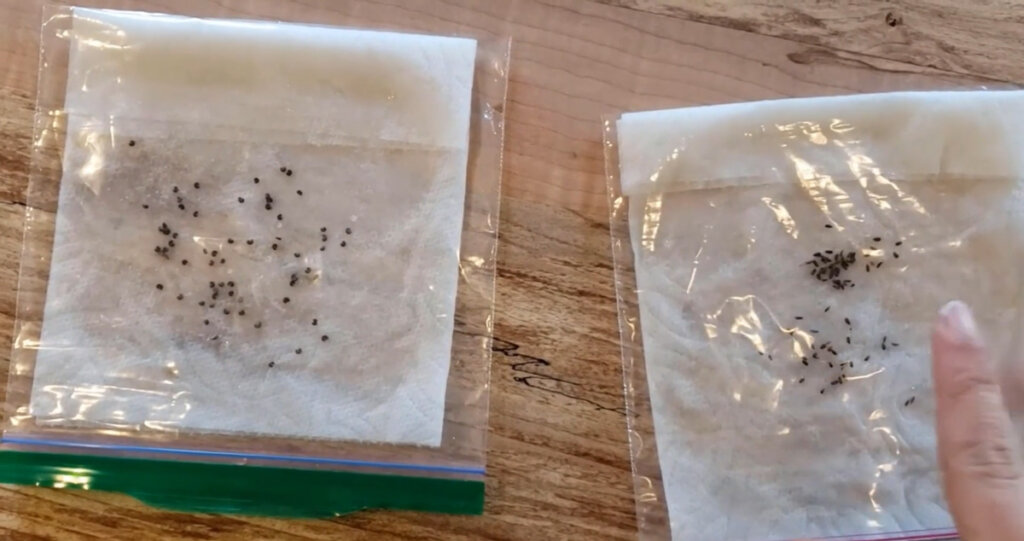
Cold Stratification
Cold stratification is putting seeds into a dormancy state with temperatures below 40° F for a specific period of time. This is to improve the germination rate (the number of seeds that will sprout). Learn more about how to cold-stratify seeds here.

Seed Organization
When growing and expanding a medicinal herb garden, you’ll definitely want to find a way to keep all your seeds organized to plant year after year.
You can definitely save seeds from your medicinal herbs, or you can buy more seeds and keep them stored in a cool dry place.
My favorite way to do this is by using a photo case! I have an entire photo case designated for my herbs and another for my vegetable garden. Learn more about saving and storing seeds here.
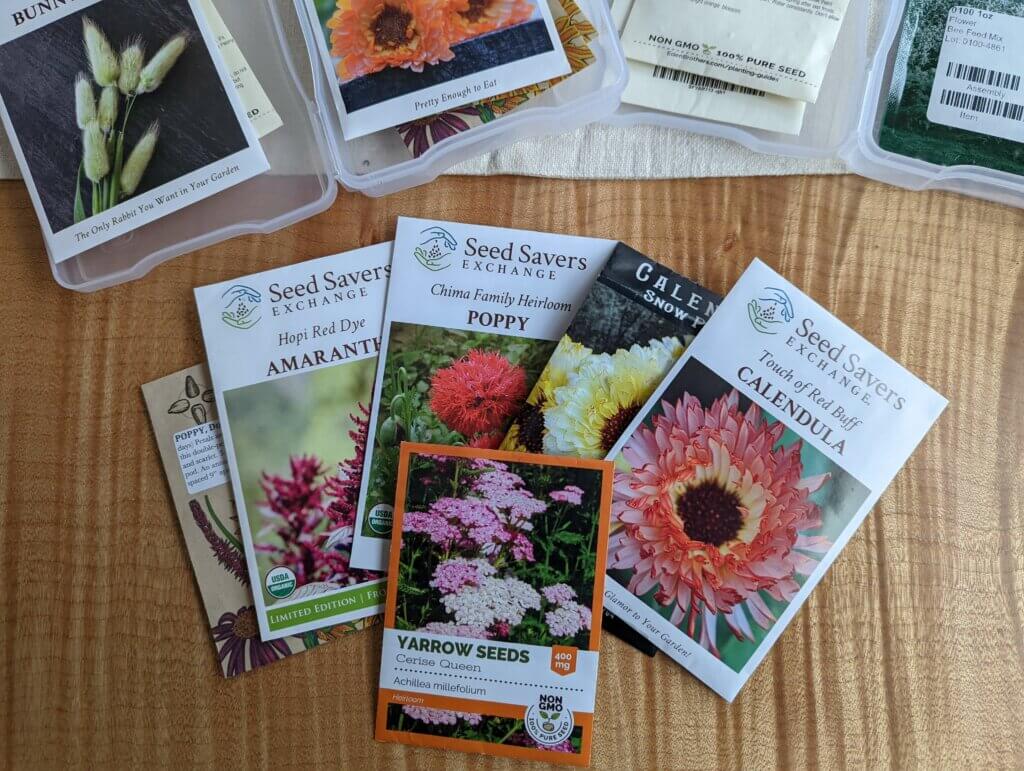
Where to Buy Medicinal Herbs?
My go-to resources are Siskiyou Seeds out of Oregon (you know how I love buying from companies close to me and my growing zone), Seed Savers Exchange out of Iowa, as well as Strictly Medicinal Seeds out of Southern Oregon where you can buy both seeds and plant starts (when they’re in stock).
Eden Brothers is a great place for buying flower seeds as well as live bulbs. Floret Flowers is great for beautiful cut flowers.
And finally, I ordered my medicinal roses from Heirloom Roses.

What Medicinal Herbs Grow Well Together?
Most medicinal herbs will grow well together. The best thing to consider is which herbs will attract pollinators, which plants will repel pests, and the spacing of each plant to avoid shading out herbs that need sunlight.
You also want to beware of deer in your medicinal herb gardens and consider either fences or companion planting some deer-repelling plants around the plants the deer may like.
Here is the list of deer-resistant plants we’re going to try planting (grab the planning chart here for a more comprehensive list):
- Calendula
- Horehound
- Ashwaganda
- Amaranth
- Aster
- Bunny Tails
- Straw Flower
- Mint
- Rosemary
- And other strong culinary herbs

Start Now!
One regret I have about my medicinal herb garden is that I didn’t start sooner. I never realized just how much joy my medicinal herb garden brings, but I wish that I had fallen in love with the beauty of the herb garden sooner.
I also wish I would have purchased some herbal starts instead of starting everything from seed to give me a headstart on being able to harvest. You can purchase many herbs in crowns which will give you a great head start.
Don’t be afraid if you have to dig up and move a plant to a new home if you decide to change your layout. Most perennial plants are very hardy and will handle a move (once they’re in their dormancy) just fine.
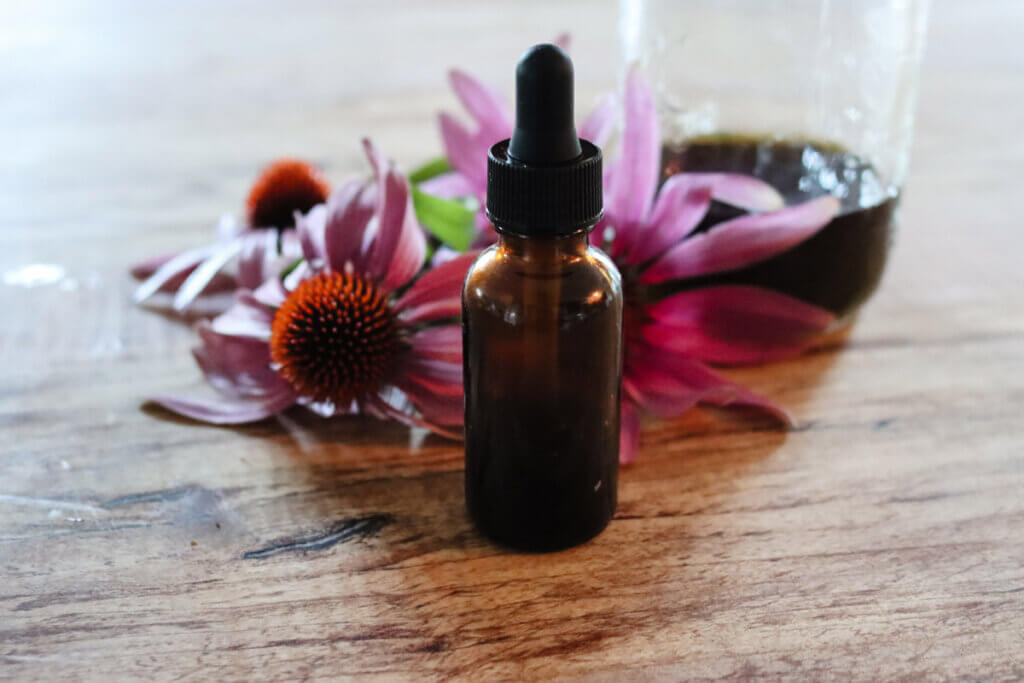
More Posts You May Enjoy
- Growing Cut Flowers for Business or Pleasure
- Herbal Home Remedies for Cold and Flu
- 7 Natural Cough and Cold Herbal Remedies
- Herbal Medicinal Tea – How to Make Your Own
- 7 Ways to Use Medicinal Herbs at Home
- Homemade Traditional Fire Cider Recipe & Benefits
- Echinacea Tincture – How To Make It & Use It
- Medicinal Kitchen Herbs (6 Herbs You Should Grow)
[fusebox_transcript]
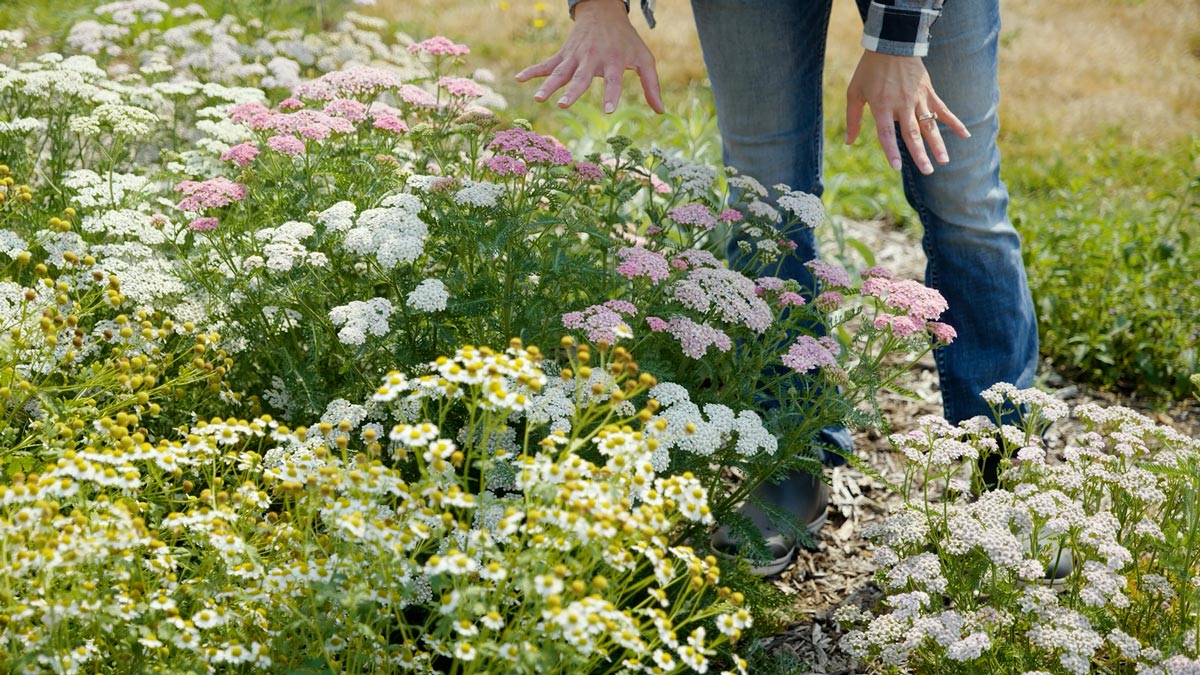

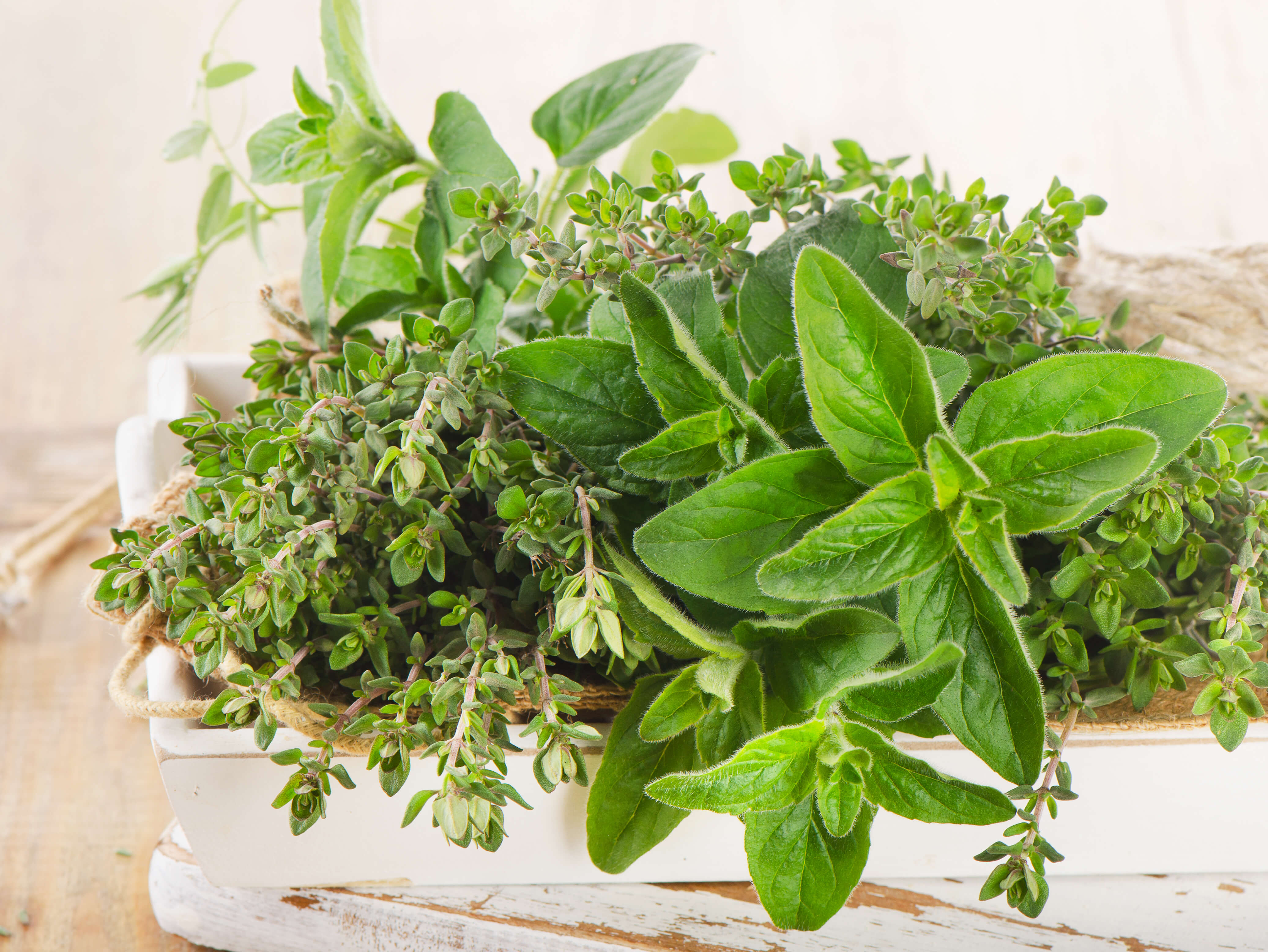

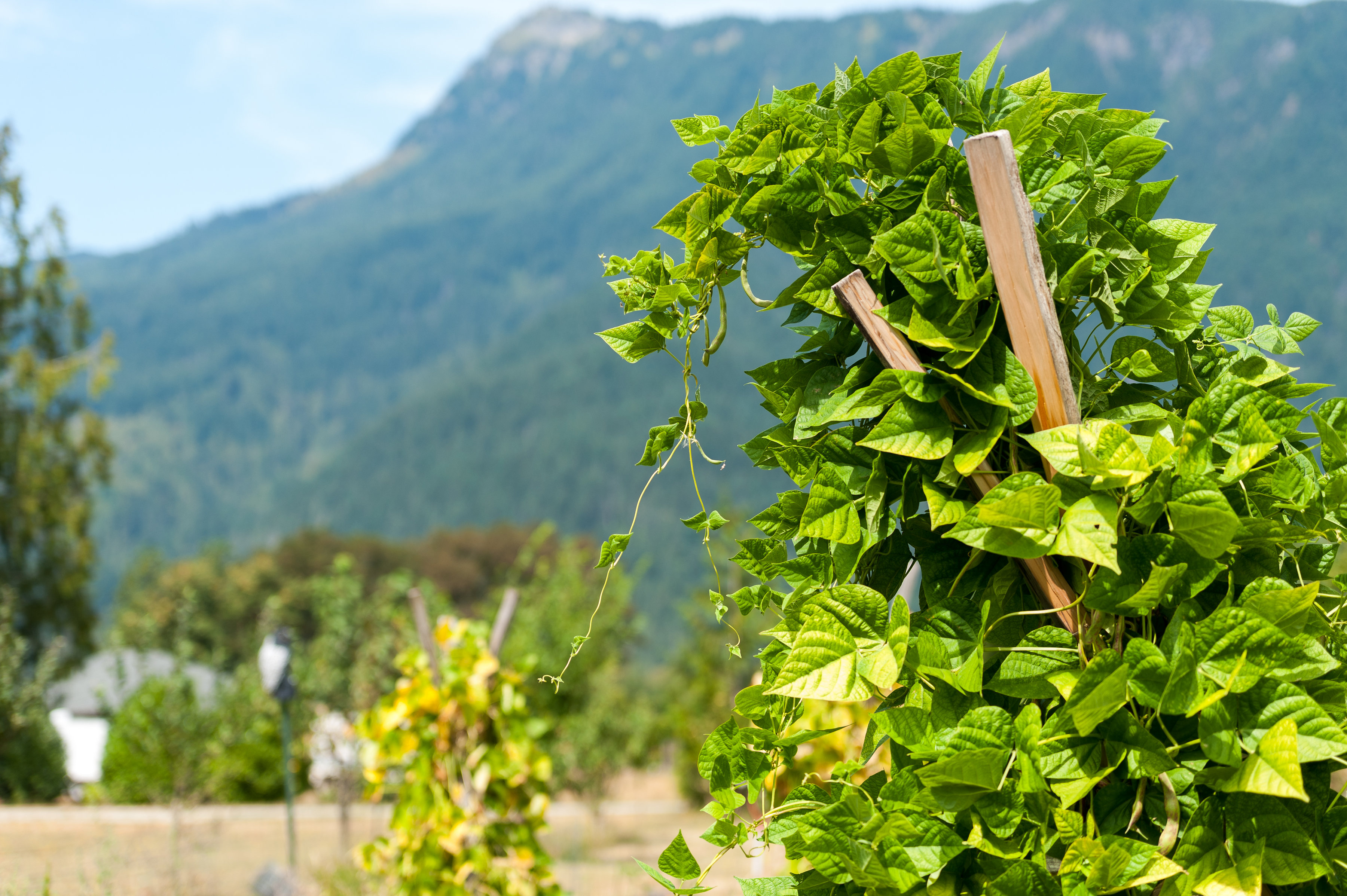
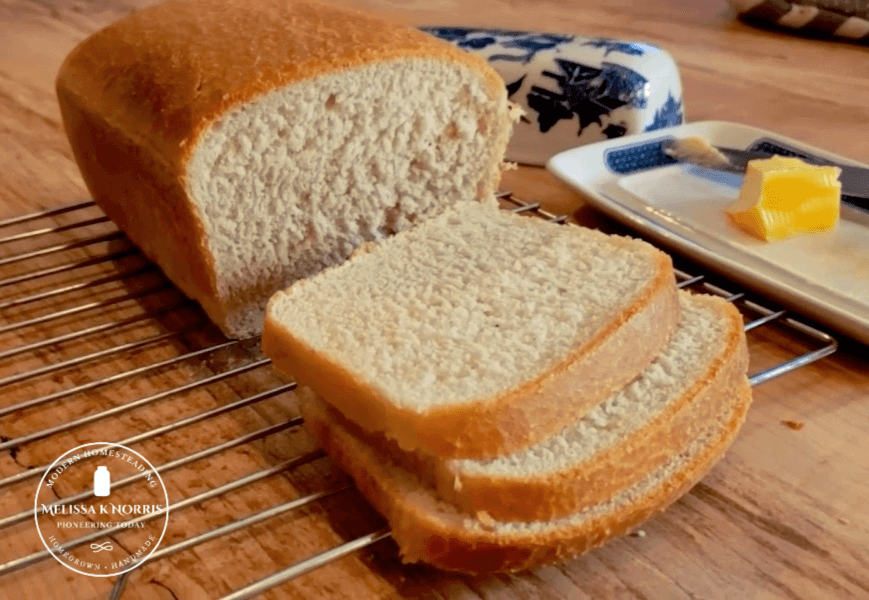
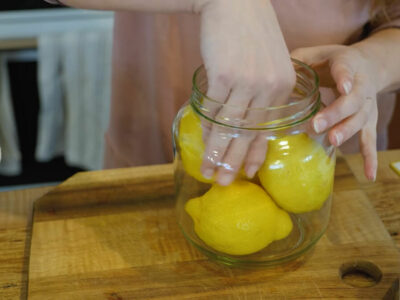



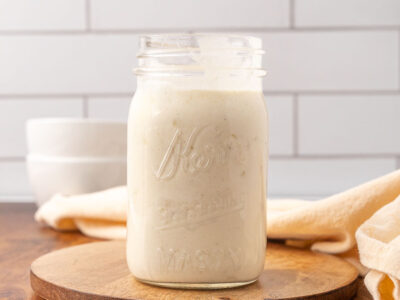
Hey 🙂 In the picture of you holding the little jar of herbs and the two flower packets, where did you find the little boxes that hold your flower/herb seed packages? Are those little boxes that fit inside of a bigger box? Thanks!
the storage box is called a Photo storage box and you can find them at most craft stores like Hobby Lobby and Michaels … I got mine from Joann’s crafts before they closed
Hi Melissa! I have learned so much from you and I appreciate you! I could not find the link to the ebook you mentioned. Could you direct me? Thank you and God bless you!!
Yes, so sorry, we just got that updated, here’s the link https://melissa-norris.mykajabi.com/offers/JYYC88Bz/checkout
In the podcast you mention your ebook and it being 35% off right now. I don’t see a link to that anywhere. Thank you
Yes, here’s the link https://melissa-norris.mykajabi.com/offers/JYYC88Bz/checkout
The link to the charts is not working for me.
Hi Melissa, thank you for sharing what you learn. I’ve downloaded your herb chart pdf, but am confused by what is included in the chart versus your post. For example, your post has things like sage, bergamot, borage, etc and your chart has a smaller number of plants like poppies, sweet peas, calendula. Do you have them included together somewhere? Do you grow medicinals and cut flowers together? Thank you!